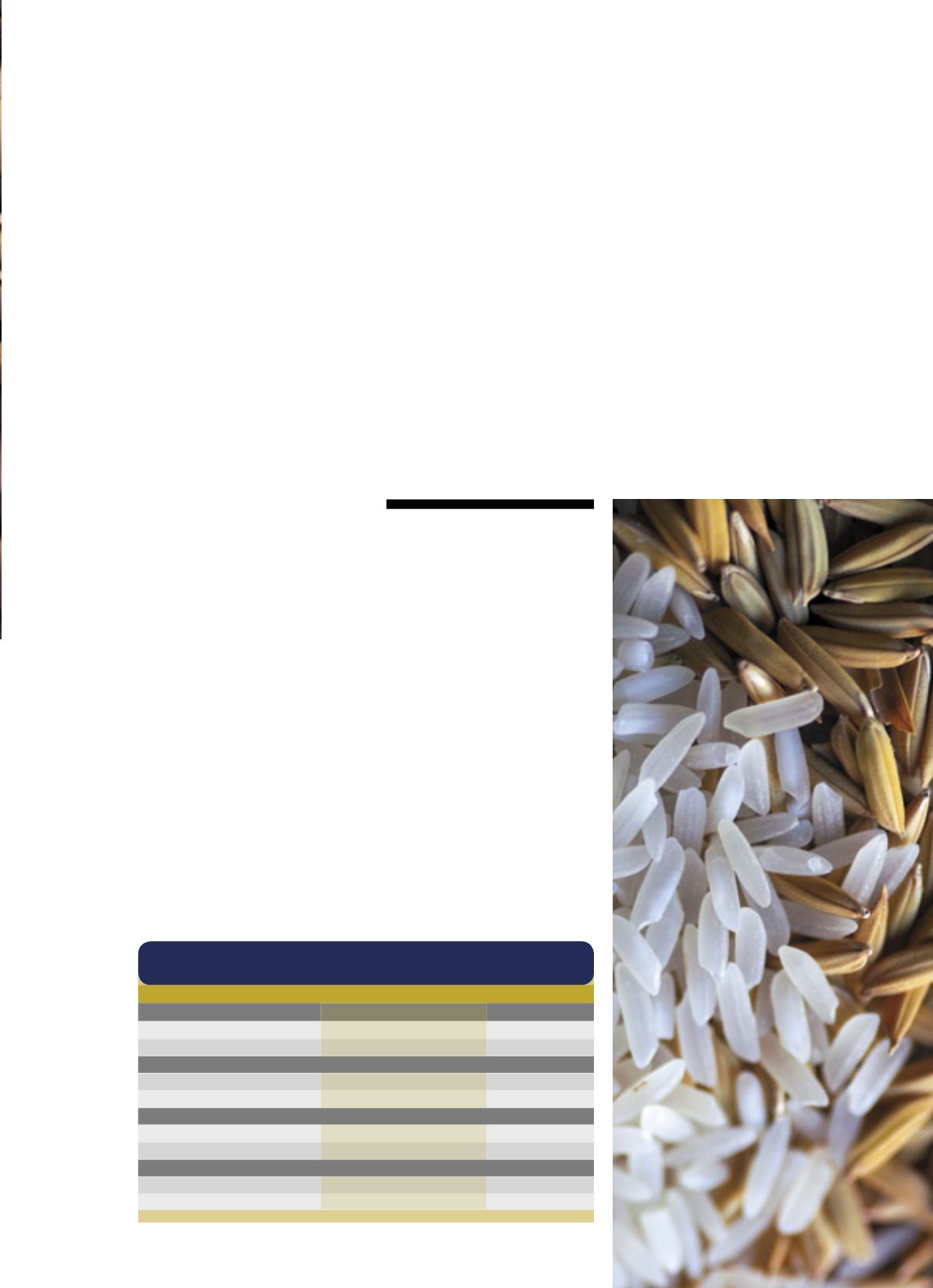
Inor Assmann
33
For the
dining table
The beans and rice duo
keeps its place in the
farmand on the table,
with a recent recovery in
planted area due to better
weather conditions
The popular Brazilian food duo, which gives rise to the so-
called “baião for two” in the Northeast, preserves its tradition
on the dining table and always exists in the production fields.
In Bahia’s Western Region, along with the commercial cere-
al and fiber crops, beans occupy expressive areas and rice is
equally grown. After experiencing severe climate conditions in
the 2015/16 growing season, the past season registered area
recovery for highland crops of the two foodstuffs in the region.
Vigna beans, also known as Gurutuba, or simply string
beans, with two growing seasons a year, especially in the
winter, experienceda20-percent increase
in the first season and 14.3-percent in the
second, in the 2016/17 productive cycle.
The planted area, rather bigger in the first
season, evolved similarly. In all, 58 thou-
sand hectares were cultivated, result-
ing into a harvest of 54 thousand tons,
equivalent to R$ 90.6 million and, com-
pared to the previous season, the first
was more profitable. In addition, Cario-
quinha beans take advantage of irrigation systems, but the
crop dropped 10% during this season, to 9 thousand hect-
ares and 27 thousand tons.
On the other hand, rice occupied 7 thousand hectares,
and was particularly cultivated in the Coaceral region, in the
hugemunicipality of Formosa do Rio Preto. In general, plant-
ed as a pioneer crop in recently cleared land, rice has lost
ground to sorghum and soybean over the past years. Even
so, it increased 16.7% in area and volume in the 2016/17 sea-
son, withbetter cropping areas. The production of the cereal,
as a non-irrigated crop, reached a total of 12.6 thousand tons
in the past crop year in the region.
Vignabeansoccupy
58 thousand
hectares inWestern
Bahia inthe 2016/17
crop year
Fonte:
Conselho Técnico Aiba
O BAIÃO DE DOIS
baião off two
Resultados do
feijão
Vigna na safra 2016/17
1ª safra
Área (ha)
Produtividade (sc/ha)
Produção (t)
2015/16
15.000
17,0
15.300
2016/17
18.000
17,0
18.360
2ª safra
2015/16
35.000
15,0
31.500
2016/17
40.000
15,0
36.000
Números do feijão irrigado Carioquinha
2015/16
10.000
50,0
30.000
2016/17
9.000
50,0
27.000
Plantios de
arroz
na região
2015/16
6.000
30,0
10.800
2016/17
7.000
30,0
12.600


